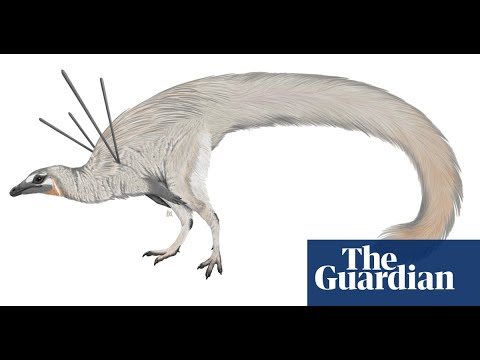About 110 million years ago along the shores of an ancient lagoon in what is now north-eastern Brazil, a two-legged, chicken-sized Cretaceous period dinosaur made a living hunting insects and perhaps small vertebrates like frogs and lizards.
On the inside, it was ordinary, with a skeleton similar to many small dinosaurs from the preceding Jurassic Period, scientists said on Tuesday. On the outside, it was anything but.
This dinosaur, called Ubirajara jubatus, possessed a mane of hair-like structures while also boasting two utterly unique, stiff, ribbon-like features probably made of keratin – the same substance that makes up hair and fingernails – protruding from its shoulders.
“There are plenty of other strange dinosaurs, but this one is unlike any of them,” said David Martill, a paleobiology professor at the University of Portsmouth in England, who helped lead the study, published in the journal Cretaceous Research.
Ubirajara’s hair-like structures appear to be a rudimentary form of feathers called protofeathers. This was not actual hair, an exclusively mammalian feature. Many dinosaurs had feathers. In fact, birds evolved from small feathered dinosaurs about 150m years ago.
“Likely from a distance it looked hairy rather than feathery,” Martill said. “Likely it had hair-like protofeathers over much of its body but they are only preserved along its neck, back and arms. The ones on its back are very long and give it a sort of mane that is unique for dinosaurs.“
Ubirajara’s ribbon-like structures may have been used for display, possibly to attract mates or intimidate adversaries or in inter-male rivalry, Martill added. Such displays often are made by male animals – think of a peacock’s elaborate tail feathers – leading Martill to make an “educated guess” that this Ubirajara individual was male.
“The ribbons that seem to come from the shoulders are like nothing I have seen in nature before,” Martill said.
While it is impossible to know from the fossil – which arrived at a museum in Ceará state in the early 1990s, ScienceNews reported – Martill said Ubirajara may have been colorful.
“I bet it was,” he added.
Guardian staff contributed to this report



